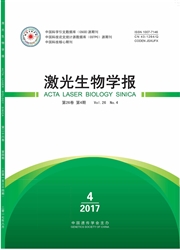

 中文摘要:
中文摘要:
小胶质细胞的激活在神经退行性疾病的病理发生过程中发挥了重要的作用.一旦被激活,他们便具有类似巨噬细胞的吞噬功能以及释放炎症因子的能力,前者有利于保护中枢神经系统的功能,而后者则会加重神经元的死亡.然而,在神经退行性疾病的发生过程中,脑内的小胶质细胞却不能有效地对死亡细胞甚至Aβ进行吞噬.因此,调控小胶质细胞的吞噬功能被认为是寻求神经保护治疗手段的一个有效策略.在本研究中,我们的实验结果表明了20 J/cm2的LPLI能够增强LPS激活的小胶质细胞的吞噬功能.我们发现LPLI介导的小胶质细胞的吞噬功能增强是一个基于actin聚合的Rac1依赖的过程,持续激活的Rac1(Rac1Q61L)相比野生型Rac1可以诱导更多的actin聚合,而显性负效应的Rac1 (Rac1T17N)却显著抑制了actin的聚合.另外,我们运用一个基于荧光能量共振转移的Raichu-Rac1质粒也进一步证实了在LPLI下Rac1的激活,并且这一激活过程是由PI3K/Akt通路所介导的.我们的研究为控制神经退行性疾病的进程提供了一个可行的的治疗策略.
 英文摘要:
英文摘要:
Microglial activation plays an important role in neurodegenerative diseases.Once activated,they have macrophage-like capabilities,which can be beneficial by phagocytosis and harmful by secretion of neurotoxins.However,the resident microglia always fail to trigger an effective phagocytic response to clear dead cells or Aβ deposits during the progression of neurodegeneration.Therefore,the regulation of microglial phagocytosis is considered a useful strategy in searching for neuroprotective treatments.In this study,our results showed that low power laser irradiation (LPLI) (20J/cm2) could enhance microglial phagocytic function in LPS-activated microglia.We found that LPLI-mediated microglial phagocytosis is a Rac-1-dependent actin-based process,that a constitutively activated form of Rac1 (Rac1Q61L) induced a higher level of actin polymerization than cells transfected with wild-type Rac1,whereas a dominant negative form of Rac1 Rac1T17N) markedly suppressed actin polymerization.In addition,the involvement of Rac1 activation after LPLI treatment was also observed by using a Raichu fluorescence resonance energy transfer (FRET)-based biosensor.We also found that PI3K/Akt pathway was required in the LPLI-induced Rac1 activation.Our research may provide a feasible therapeutic approach to control the progression of neurodegenerative diseases.
 同期刊论文项目
同期刊论文项目
 同项目期刊论文
同项目期刊论文
 Activation of nuclear estrogen receptors induced by low-power laser irradiation via PI3-K/Akt signal
Activation of nuclear estrogen receptors induced by low-power laser irradiation via PI3-K/Akt signal Mechanism of mitochondrial membrane permeabilization during apoptosis under photofrin-mediated photo
Mechanism of mitochondrial membrane permeabilization during apoptosis under photofrin-mediated photo Enhanced apoptotic effects by downregulating Mcl-1: Evidence for the improvement of photodynamic the
Enhanced apoptotic effects by downregulating Mcl-1: Evidence for the improvement of photodynamic the 期刊信息
期刊信息
